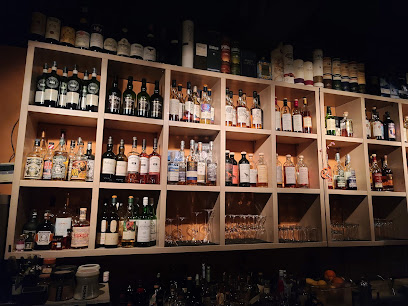
Gyeonggijeon Shrine: A Glimpse into Korea's Royal Heritage
Explore the majestic Gyeonggijeon Shrine in Jeonju, a historical landmark celebrating Korea's royal heritage and stunning architecture.
Gyeonggijeon Shrine, a historical landmark in Jeonju, is a must-visit for anyone interested in Korea's royal history. Nestled in scenic surroundings, this shrine houses the portrait of King Taejo, the founder of the Joseon Dynasty. With its stunning architecture and serene atmosphere, it's a perfect spot for tourists to explore Korean culture and history.
A brief summary to Gyeonggijeon Shrine
- 44 Taejo-ro, Jeonju-si, Wansan-gu, Jeollabuk-do, 560-033, KR
- +8263-287-1330
- Visit website
- Monday 9 am-6 pm
- Tuesday 9 am-6 pm
- Wednesday 9 am-6 pm
- Thursday 9 am-6 pm
- Friday 9 am-6 pm
- Saturday 9 am-6 pm
- Sunday 9 am-6 pm
Local tips
- Visit early in the morning to enjoy a quieter experience and take stunning photographs without crowds.
- Be sure to check the schedule for cultural performances, which offer a unique glimpse into traditional Korean arts.
- Wear comfortable shoes, as you may want to explore the surrounding gardens and nearby attractions.
- Consider bringing a picnic to enjoy in the gardens for a relaxing afternoon surrounded by nature.
Getting There
-
Car
If you are traveling by car, head towards the city of Jeonju in Jeollabuk-do. Enter the address '44 Taejo-ro, Wansan-gu, Jeonju-si' into your GPS. The shrine is located in the Wansan-gu district, which is easily accessible via the main roads. Look for parking options nearby, as there are public parking lots available within walking distance of the shrine. Note that there may be a parking fee depending on the lot you choose.
-
Public Transportation (Bus)
For those using public transportation, catch a local bus to Jeonju. Buses from various locations in the Gwandong Region frequently travel to Jeonju. Once in Jeonju, you can take bus number 7 or 8 that will take you directly to the Gyeonggijeon Shrine. Get off at the 'Gyeonggijeon Entrance' stop. The bus fare is approximately 1,200 won.
-
Public Transportation (Train)
If you prefer traveling by train, take a train to Jeonju Station. From Jeonju Station, you can take a taxi for about 5-10 minutes to reach Gyeonggijeon Shrine. The taxi fare should be around 5,000 won. Alternatively, you can take local bus number 5 or 6 from the station, which will take you to the shrine for about 1,200 won.
-
Walking
For those already in the Jeonju area, Gyeonggijeon Shrine is within walking distance from the central area of Jeonju. If you are near Jeonju Hanok Village, simply walk south on Taejo-ro for about 15 minutes until you reach the shrine. This is a pleasant walk that allows you to enjoy the local architecture and atmosphere.
Discover more about Gyeonggijeon Shrine
Iconic landmarks you can’t miss
Jegigo
0.1 km
Explore Jegigo, a historical landmark in Jeonju-si, Jeollabuk-do, where the rich cultural heritage meets stunning architecture.
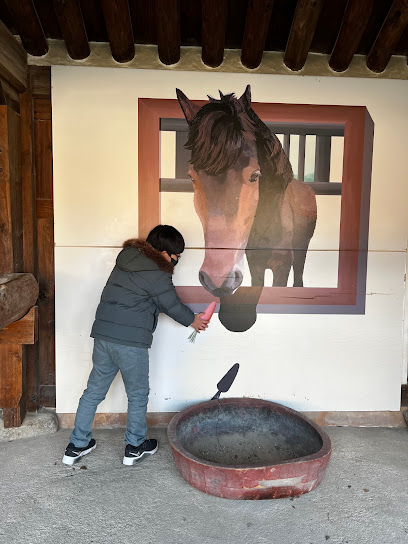
예종대왕태실및비
0.1 km
Discover the charm of Jeonju Hanok Village, where traditional Korean architecture meets vibrant culture and delicious cuisine in the heart of South Korea.
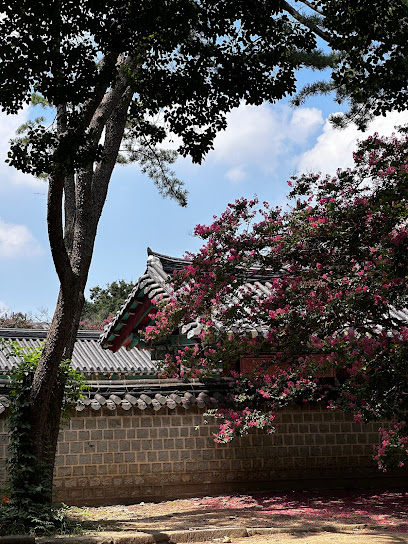
Fan Culture Center
0.2 km
Explore the artistry and history of Korean fans at the Fan Culture Center in Jeonju, a cultural gem showcasing the elegance of traditional craftsmanship.
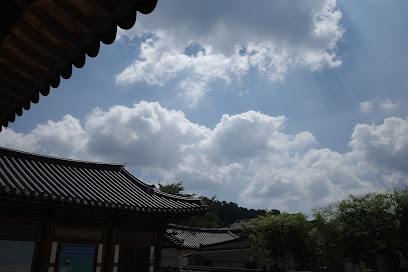
Gyodong Tea Garden
0.3 km
Experience tranquility and authentic Korean tea culture at Gyodong Tea Garden in Jeonju, a must-visit for every traveler seeking peace and relaxation.
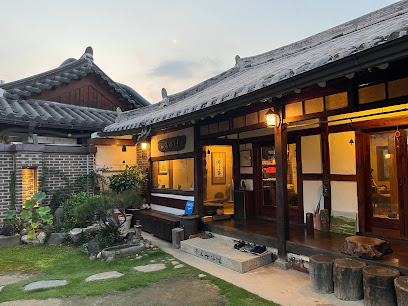
한옥마을전망대
0.3 km
Discover breathtaking views and a serene atmosphere at Jeonju's Observation Deck, a perfect escape for tourists seeking beauty and tranquility.
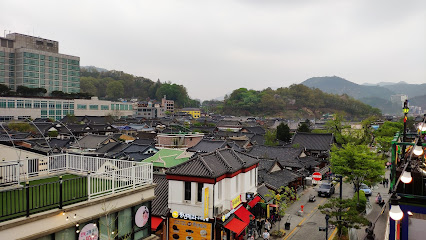
Jeonmang | Cafe & Guesthouse
0.4 km
Experience the perfect blend of comfort and flavor at Jeonmang Cafe & Guesthouse in Jeonju, where every sip and stay tells a story.
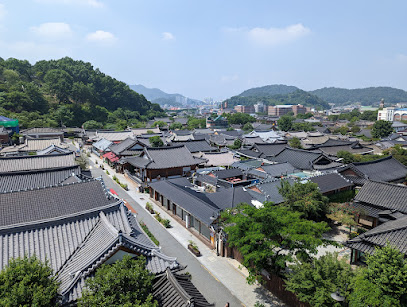
Jeollabuk-do Monument No.16
0.4 km
Explore the historic charm of Jeollabuk-do Monument No.16, a serene landmark that showcases Korea's rich cultural heritage in Jeonju.
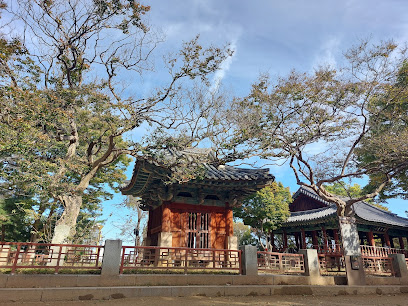
전주가맥길 Jeonju Beer Street
0.5 km
Discover the lively atmosphere of Jeonju Beer Street, where local brews and delicious street food create an unforgettable nightlife experience in South Korea.

전주한옥마을 관광안내소
0.5 km
Explore Jeonju's rich culture and history at the Tourist Information Center, your gateway to unforgettable experiences in South Korea's charming city.
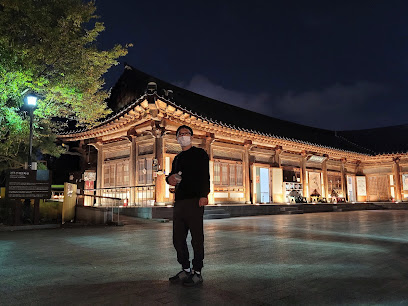
Korea Traditional Culture Center
0.7 km
Uncover the essence of Korean tradition at the Korea Traditional Culture Center in Jeonju-si, a must-visit for cultural enthusiasts.
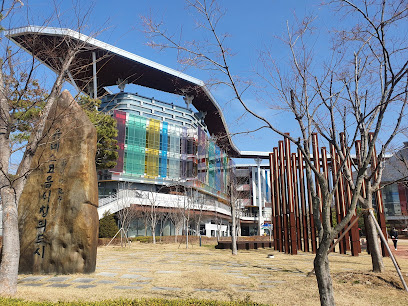
조선난장
0.7 km
Explore the cultural heritage of Korea at Jeonju Hanok Village Museum, a must-visit destination for history and architecture enthusiasts.
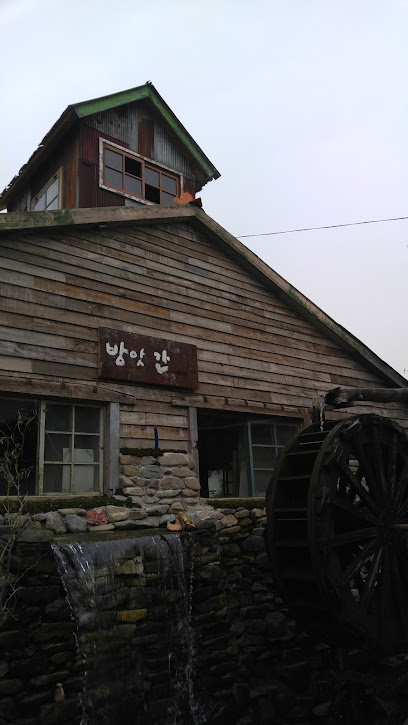
Daeseongjeon
0.7 km
Discover the architectural beauty and cultural significance of Daeseongjeon, a historical landmark that captures the essence of Jeonju's rich heritage.
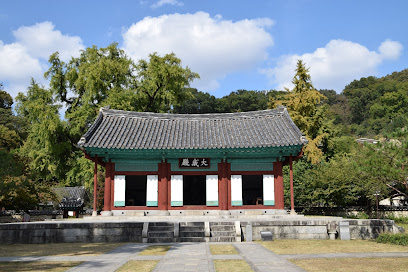
전주 영화의거리
0.8 km
Discover the charm of traditional Korea at Jeonju Hanok Village, a beautiful blend of history, culture, and culinary delights.
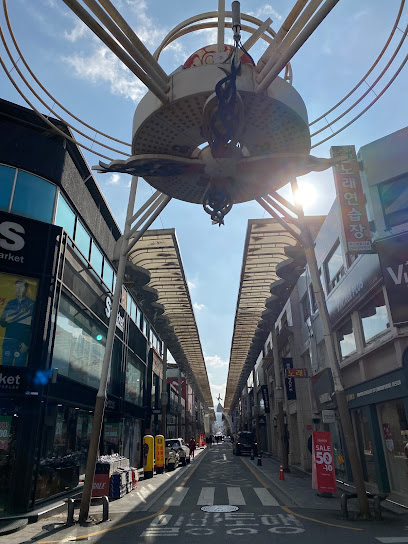
노송광장
0.9 km
Experience the beauty and tranquility of Namsan Park in Jeonju, a perfect urban escape for nature lovers and cultural enthusiasts alike.
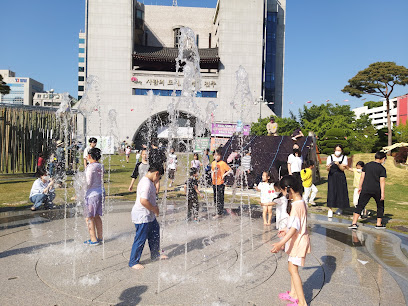
Unmissable attractions to see
Royal Portrait Museum
0.1 km
Explore Korea's regal past at the Royal Portrait Museum in Jeonju, home to stunning royal portraits and rich historical artifacts.
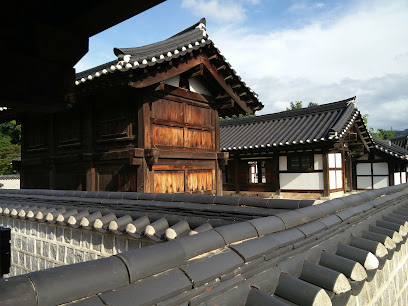
Pungnammun Square
0.2 km
Explore Pungnammun Square, a serene park in Jeonju, blending historical charm with natural beauty, perfect for relaxation and cultural experiences.
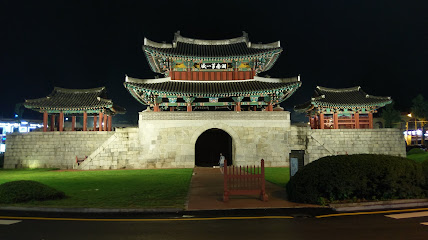
Jeondong Cathedral
0.2 km
Explore the architectural beauty and serene ambiance of Jeondong Cathedral, a must-visit cultural landmark in Jeonju, South Korea.

Pungnammun Gate
0.3 km
Explore the Historic Pungnammun Gate in Jeonju, a stunning symbol of Korea's rich heritage and architectural beauty, perfect for history lovers and photographers.

Jeonju Hanok Village History Museum
0.3 km
Explore the rich cultural heritage of Korea at the Jeonju Hanok Village History Museum, a must-see destination for history lovers and travelers.
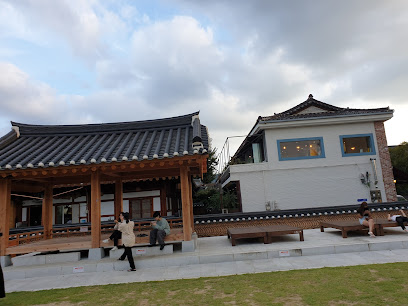
Jeonju Hanok Village
0.3 km
Explore the traditional beauty of Jeonju Hanok Village, where history, culture, and delicious cuisine come together in a vibrant setting.
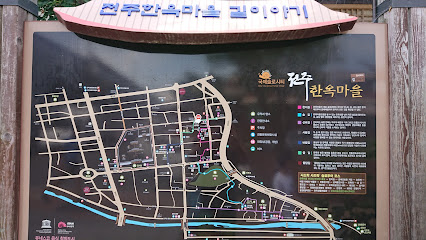
Jeolla Gamyoung
0.3 km
Explore Jeolla Gamyoung, a historical landmark in Jeonju, where traditional Korean architecture meets serene beauty.
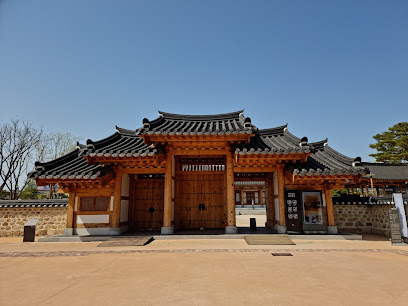
한옥마을 거리
0.4 km
Discover the charm of Jeonju's Hanok Village, where tradition meets vibrant culture in a stunning tapestry of history and cuisine.

Jeonju Korean Liquor Museum
0.4 km
Explore the rich heritage of Korean liquors at the Jeonju Korean Liquor Museum, where tradition meets taste in a captivating cultural experience.
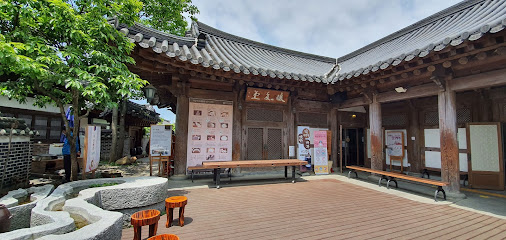
Nambu Market
0.4 km
Discover the vibrant Nambu Market in Jeonju, where culinary delights and local crafts come together in a bustling traditional market atmosphere.
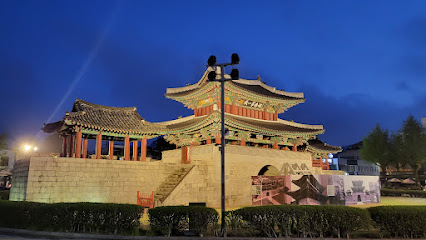
Youth Market
0.4 km
Experience the vibrant atmosphere of the Youth Market in Jeonju, where local crafts meet delicious street food in a cultural hub.
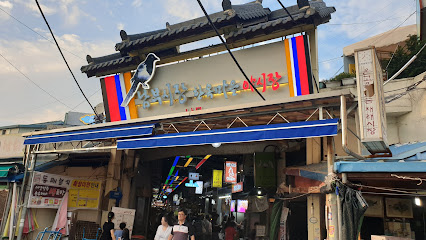
Jeonju Nanjang
0.4 km
Experience the excitement of Jeonju Nanjang, a unique theme park blending thrilling rides with the rich culture and cuisine of Jeonju, South Korea.
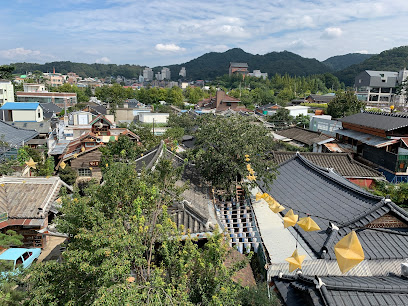
HAGINDANG
0.4 km
Discover the cultural essence of Jeonju at HAGINDANG, a heritage building that beautifully showcases traditional Korean architecture and local arts.
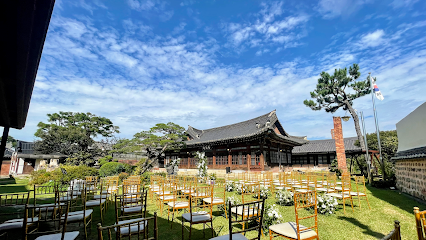
Omokdae
0.4 km
Explore Omokdae, a historical landmark in Jeonju, where culture and nature intertwine to create a breathtaking experience.
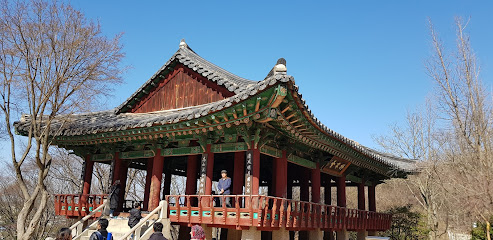
Jeonju Pungpaejigwan
0.5 km
Explore the rich heritage and stunning architecture of Jeonju Pungpaejigwan, a historical landmark that embodies the essence of Korean culture.
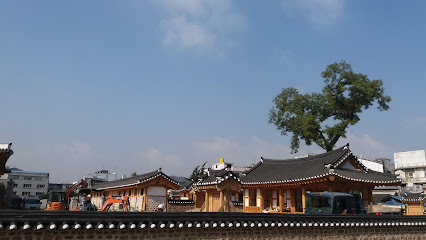
Essential places to dine
45-year-old traditional bibimbap Jongno Hall
0.1 km
Experience authentic Korean bibimbap at Traditional Bibimbap Jongno Hall in Jeonju - where tradition meets flavor.
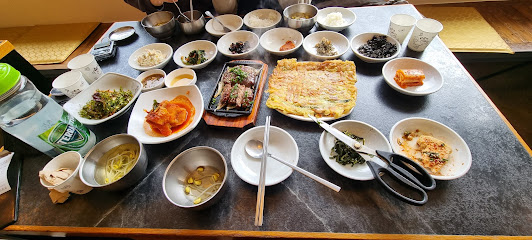
Jeondong Ddeokgalbi
0.1 km
Experience authentic Korean cuisine at Jeondong Ddeokgalbi in Jeonju—home of delicious ddeokgalbi and rich culinary traditions.
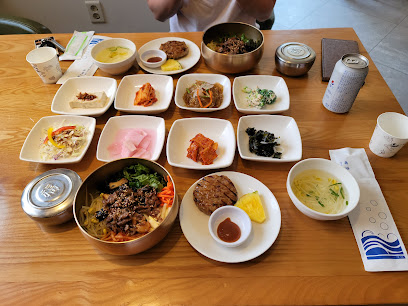
Nadeulbul
0.1 km
Experience authentic Korean flavors at Nadeulbul in Jeonju – where tradition meets taste in every delightful dish.
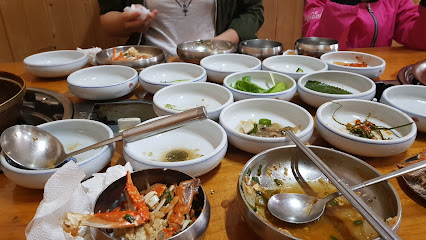
Yangbanga
0.2 km
Discover authentic Korean traditional full course meals at Yangbanga in Jeonju - A culinary journey through Korea's rich flavors.
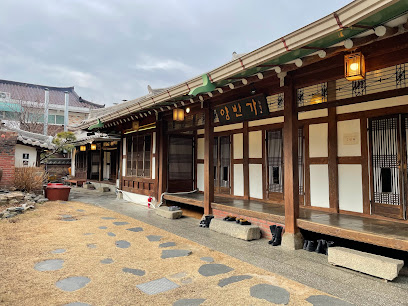
Pungnamjeong
0.2 km
Indulge in authentic Korean cuisine at Pungnamjeong in Jeonju - a must-visit culinary experience for every traveler.
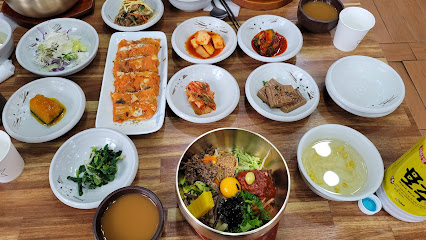
Jeonju hanok village restaurant jeonju is jeonju
0.2 km
Experience authentic Korean cuisine in a historic setting at Jeonju Hanok Village – a culinary gem in South Korea.
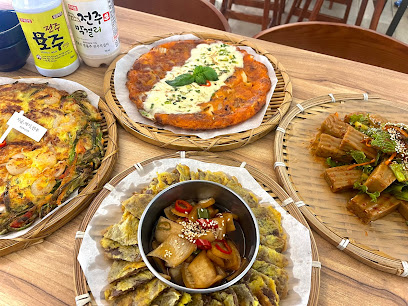
Hangugjib
0.2 km
Discover the authentic taste of Korea at Hangugjib in Jeonju - where tradition meets flavor in every dish.

Gyodong Seokgalbi
0.2 km
Experience authentic Korean barbecue at Gyodong Seokgalbi—where tender ribs meet rich tradition in Jeonju-si.
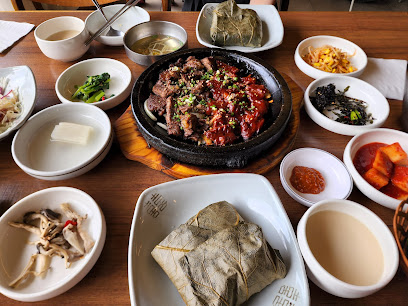
Gyodong Tteokgalbi
0.2 km
Experience authentic tteokgalbi at Gyodong Tteokgalbi in Jeonju – a culinary delight steeped in tradition and flavor.
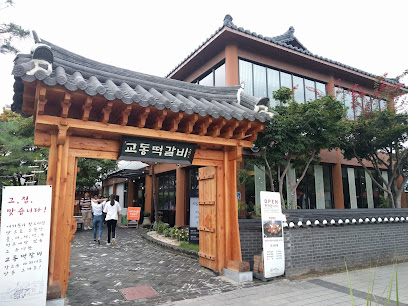
Kkochdamjib
0.2 km
Experience the rich flavors of traditional Korean cuisine at Kkochdamjib in Jeonju - where every meal is a cultural journey.
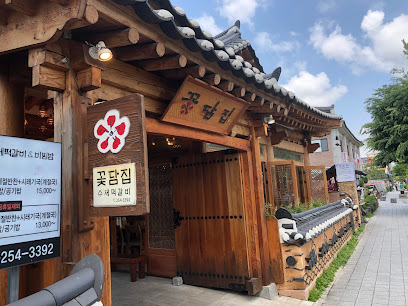
Yangsigdang
0.2 km
Experience authentic Italian cuisine at Yangsigdang in Jeonju - where fresh ingredients meet traditional recipes for an unforgettable dining experience.
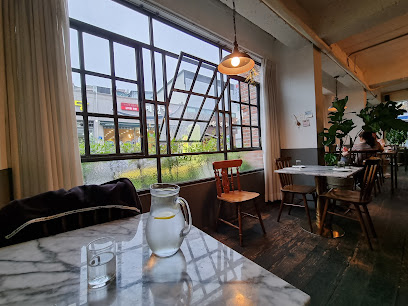
9413 Restaurant & Pub
0.2 km
Discover authentic Korean cuisine at 9413 Restaurant & Pub in Jeonju – where tradition meets modern dining in a cozy atmosphere.
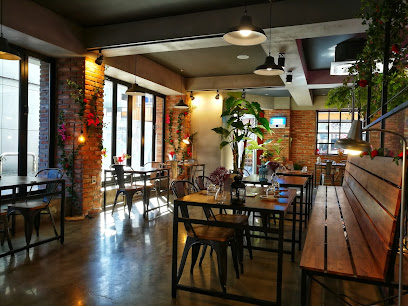
Veteran Kalguksu
0.3 km
Experience the authentic taste of Korea at Veteran Kalguksu in Jeonju - home to delicious handmade kalguksu noodles and traditional flavors.
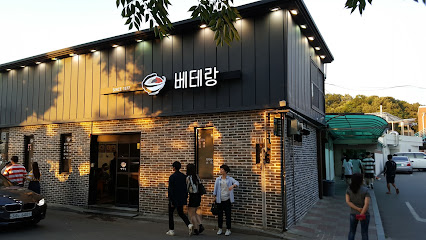
좋은날레스토랑
0.3 km
Savor delightful Western dishes at 좋은날레스토랑 in Jeonju – where tradition meets modern dining experiences.

Jeonju Waengi Kongnamul-gukbap
0.3 km
Experience authentic Korean cuisine at Jeonju Waengi Kongnamul-gukbap - home of delicious kongnamul soup and local flavors.
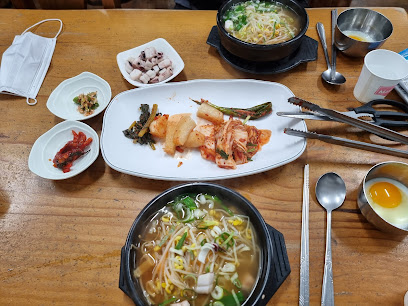
Markets, malls and hidden boutiques
라라빈관
0.2 km
Explore the eclectic fashion offerings of 라라빈관 in Jeonju, where tradition meets modern style in a charming boutique setting.

Kakao Friends
0.2 km
Explore Kakao Friends in Jeonju, a vibrant stationery store that offers a delightful range of unique merchandise featuring beloved characters.

Jeonju hanok village hanbok rental HANBOKNAM
0.2 km
Discover the rich heritage of Korea at Jeonju's HANBOKNAM, where tradition meets elegance in every hanbok rental experience.

Hi Jeonju
0.2 km
Explore Hi Jeonju, a captivating gift shop filled with unique local crafts and souvenirs that embody the cultural essence of Jeonju.

Jeonju Crafts Exhibition Hall
0.3 km
Explore the vibrant world of Korean handicrafts at Jeonju Crafts Exhibition Hall, where art and tradition come together in a unique cultural experience.

Sobok Jeonju Hanok Store
0.3 km
Discover the tranquility of Sobok Jeonju Hanok Store, a charming cafe that blends traditional Korean architecture with delicious beverages and snacks.
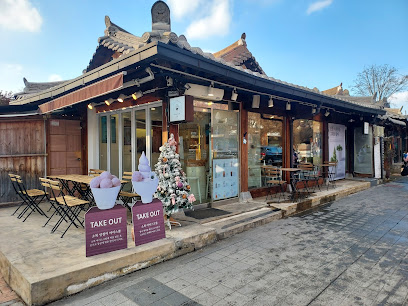
풍년제과우리밀빵
0.3 km
Indulge in the sweet flavors of Jeonju at 풍년제과우리밀빵, a delightful dessert shop offering artisan pastries and local delights.
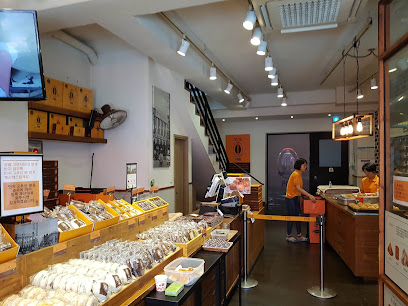
한옥마을바람공방
0.3 km
Experience the essence of Korean craftsmanship at Hanok Village Wind Workshop, where traditional artistry meets modern elegance in leather goods.

Jeonju Traditional Korean Support
0.4 km
Discover the essence of Korean heritage at Jeonju Traditional Korean Support, where art and culture meet through exquisite handmade paper.
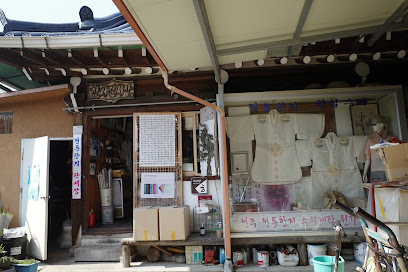
Bluestone Pottery
0.4 km
Immerse yourself in the enchanting world of pottery at Bluestone Pottery, where tradition meets contemporary artistry in Jeonju.

Grandma’s Best
0.4 km
Discover the sweet side of Jeonju at Grandma’s Best, a dessert shop offering delightful treats that blend tradition and innovation in every bite.
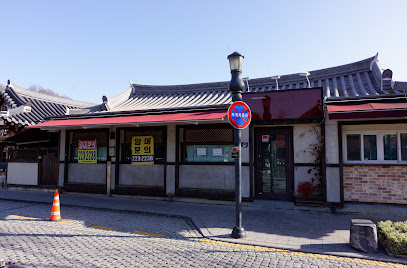
Acorn Caricature
0.4 km
Explore Acorn Caricature in Jeonju – a unique gift shop celebrating artistic expression with personalized caricatures and local souvenirs.

전라난백화점
0.4 km
Explore 전라난백화점 in Jeonju for unique gifts and authentic Korean souvenirs that capture the essence of local craftsmanship.

전라난백화점
0.4 km
Explore the enchanting world of local crafts and unique gifts at Jeonju's 전라난백화점, where tradition meets contemporary artistry in Jeollabuk-do.

Dongbu Market
0.5 km
Experience the lively atmosphere of Dongbu Market in Jeonju, where local flavors and culture come together in a vibrant shopping and dining destination.

Essential bars & hidden hideouts
작은루페
0.3 km
Discover the cozy bar experience at 작은루페 in Jeonju, where local drinks and warm hospitality meet in a charming ambiance.

작은루페
0.3 km
Discover the charm of Jeonju's nightlife at 작은루페, where local flavors and a cozy atmosphere create an unforgettable experience.

Pub Ink
0.3 km
Experience the vibrant nightlife at Pub Ink in Jeonju, where local charm meets a diverse drink selection in a cozy atmosphere.

야간비행
0.3 km
Experience the vibrant nightlife at 야간비행, Jeonju's premier bar for expertly crafted drinks and a lively atmosphere.
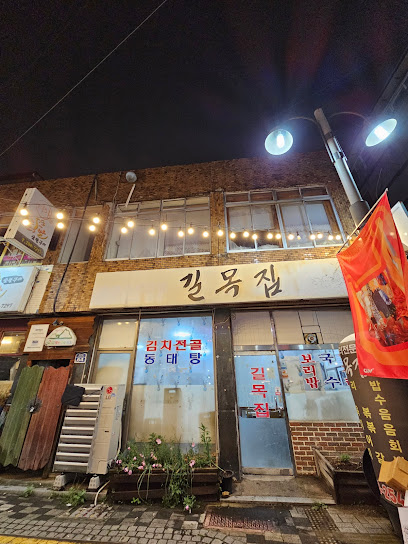
라디오스타
0.4 km
Discover the vibrant nightlife at 라디오스타, a popular bar in Jeonju, serving a delightful array of drinks and local charm.

Club The Oasis
0.4 km
Experience the electrifying nightlife at Club The Oasis in Jeonju, where vibrant music and a lively atmosphere create unforgettable nights.
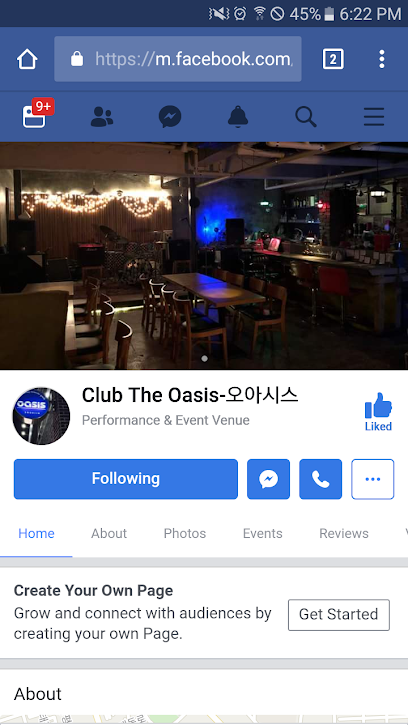
Bar Cold Dawn
0.4 km
Discover the vibrant atmosphere and unique cocktails at Bar Cold Dawn, Jeonju's must-visit cocktail bar for a memorable night out.

미술관2쥬크박스
0.4 km
Experience the fusion of art and nightlife at 미술관2쥬크박스, a lively pub in Jeonju-si offering a unique atmosphere and delightful drinks.
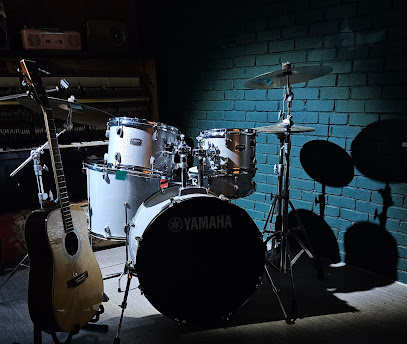
진테이블(중앙전자)
0.4 km
Discover the vibrant nightlife of Jeonju at 진테이블(중앙전자), a trendy bar offering innovative cocktails and a welcoming atmosphere.

Deepin
0.4 km
Discover Deepin in Jeonju - a lively pub blending local and international flavors in a cozy atmosphere, perfect for night owls and sports fans alike.
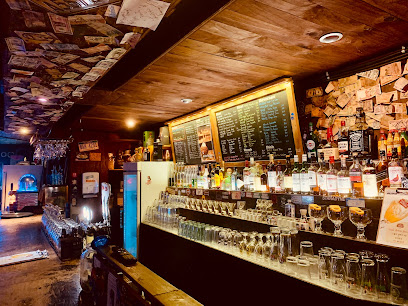
Nomadic Beer Garden 노매딕 비어가든
0.5 km
Experience the best craft beers in Korea at Nomadic Beer Garden, a lively pub and brewery in the heart of Jeonju.

Mystery Mansion
0.5 km
Discover the enchanting atmosphere and eclectic drinks at Mystery Mansion, a hidden bar gem in the heart of Jeonju, South Korea.
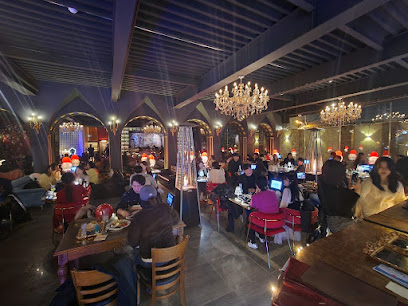
술로시티
0.5 km
Explore 술로시티, a vibrant bar in Jeonju-si, serving innovative cocktails and local brews in a lively atmosphere perfect for socializing.
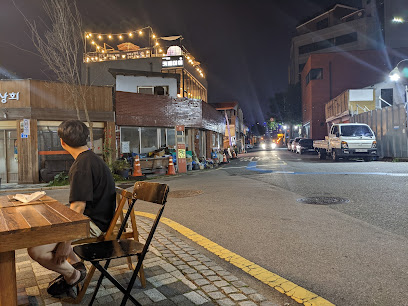
Nomadic Brewing Company
0.6 km
Experience the vibrant craft beer culture at Nomadic Brewing Company, featuring unique seasonal brews in a welcoming atmosphere.
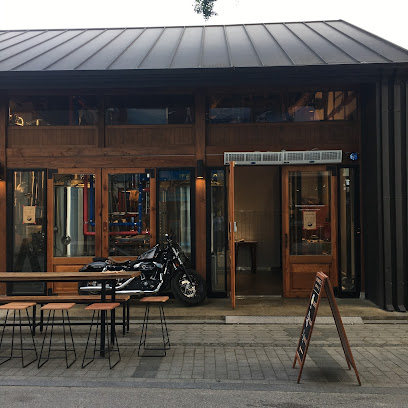
Jinju Doga
0.6 km
Experience the vibrant nightlife at Jinju Doga, a premier bar in Jeonju offering a mix of local flavors and lively entertainment.
